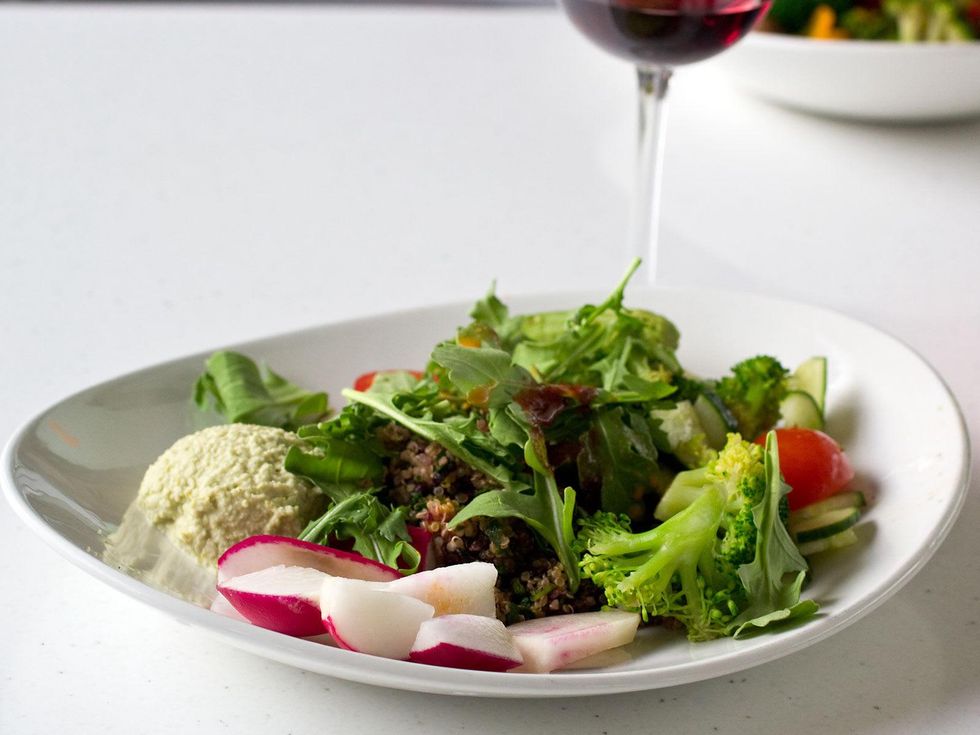New Dining Frontier
Why Dallas is ready to give healthy restaurants a shot
Out of nowhere, Dallas-Fort Worth has become America's new center of "healthy" dining, with a number of high-profile chains opening and more on the way.
Seasons 52, True Food Kitchen and LYFE Kitchen are among the big players who've set up shop in DFW. And more are on the way: Modmarket, a new fast-casual healthy chain from Denver, will open four branches here, with the first coming to Flower Mound in September.
We suddenly have juice bars on every block. Kale salad on every table. We're swimming in sweet potato, quinoa and tofu. You'd think, after decades of cheese enchiladas and rib-eye steaks, that we'd be the last place a healthy menu would succeed. But it's for those very reasons that we've become the most fertile ground in the country for a healthy restaurant revolution.
We're prosperous, young and restaurant-obsessed. We're also short on healthy options and historically susceptible to the lure of chains.
Modmarket co-founder Anthony Pigliacampo calls Dallas "the ultimate frontier." He sees parallels between Dallas and Denver, where Modmarket, known for printing nutritional information on its receipts, was founded in 2009.
"Dallas reminds me a lot of Denver," he says. "The southern part of Denver is the quintessential commuter suburb. They built the whole thing at once 20 years ago, and it has every chain known to mankind, but nothing localized or interesting.
"After we opened a store there, customers said thank you, we wanted something better for our families. In the past 10 years, Denver has grown up, and I feel like Dallas could do the same."
We do have a few pioneers such as vegan favorite Spiral Diner in Dallas and Fort Worth, Be Raw Food & Juice in Preston Center, upscale salad chain Snappy Salads, and gluten-free spot Kozy Kitchen in Uptown and Farmers Branch. But we have greater untapped potential.
"You always hear that Dallas is a restaurant city, and I'd go down there and it was basically all the same thing," Pigliacampo says. "Other than tons of Whole Foods Markets opening, there was not a lot of change. In the last couple years, these kinds of restaurants have succeeded in other parts of the country. There's a lot of people with decent paying jobs, families, and a lot of people we think want to eat better."
Paula Sepulvado, owner of Be Raw Food & Juice, says Dallas represents a hot market.
"All of these places are coming here because there's opportunity, that's why," she says. "It's easier here than a place like California, because there's more competition there. In California, you have lots of little places like Be Raw. There's none of that in Dallas, so it's wide open."
Since she took over the raw-food restaurant in July 2012, she's seen the interest in healthy dining increase. "Just look at all the juice bars opening," she says. "I think the time is right. The awareness is there."
Pigliacampo credits that to television and social media.
"Food Network is one of the highest-rated channels on TV and it has exposed people to what good food is," he says. "And I think iPhones have made a huge difference. People take photographs of food, and visual quality is becoming important.
"If you go to a Chili's and get a chicken cutlet with the painted-on stripes, nobody is going to take a photo of that. You take photos of better food. It raises the bar. The aesthetic gets slightly healthier. More people are subscribing to theory that 'better for you' is not a fad; it's what the future is."
We've also gotten younger, with the median age in Dallas now at 31 years old. Younger diners are more focused on healthier food. In a study by the Hartman Group, 12 percent of Millennials said they were vegetarians, compared to 4 percent of Gen X'ers and 1 percent of baby boomers.
Making it easier on those Millennials are exciting improvements in the technology of healthy food, says James Scott, who organizes a monthly meet-up for vegans in Dallas and who founded the annual Texas Veggie Fair, which this year takes place on October 19.
"If you have a kid who's gluten-free or has an allergy, where can you eat out as a family?" he says. "You want to eat somewhere where the kid doesn't feel weird. One of the reasons we're popular is that it's comfortable taking everyone. It's the veto vote, when you have a group of people and one says no, we're not going to eat there. You want a restaurant that can make everybody happy."




